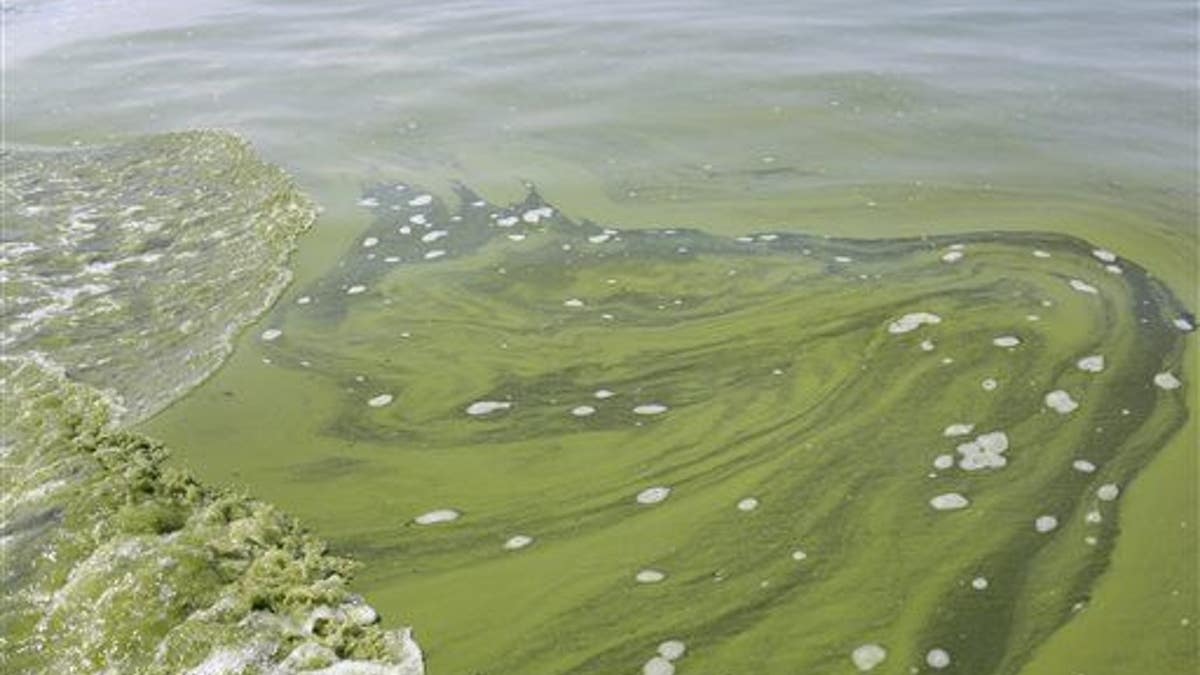
Algae is seen near the City of Toledo water intake crib, Sunday, Aug. 3, 2014, in Lake Erie, about 2.5 miles off the shore of Curtice, Ohio. (AP Photo/Haraz N. Ghanbari)
Tap water has been declared safe to drink and bathe in again in Toledo, Ohio, but scientists warn that toxic algae blooms could be here to stay.
Fertilizer from farms and cattle feedlots are partly to blame for the thick layer of algae choking Lake Erie, the most developed of the Great Lakes, reports the New York Times, which calls summertime swimming bans "so routine" in the state.
But it's not just nitrogen and phosphorus feeding the algae, which is made up of bacteria called micosystis—it's also the introduction of invasive zebra and quagga mussels that eat the algae and then eject the micosystis, which builds over time, according to the Christian Science Monitor.
And as the climate changes, leading to fewer but stronger spring storms, those toxins have longer periods of calm in which they grow, only to be stirred to the surface by the storms.
Because the algae are found in bodies of freshwater through the US, it's unlikely that the 11 million people who live along the lake are the only ones in the country afflicted by safe water concerns.
Still, experts seem to think the problem is solvable: "We have the means," one biologist tells the Monitor. "But these things cost money. Until people decide it's a high-enough priority, it's not going to get done." Meanwhile, poisonous algae have been found in lakes from California to Minnesota and even Cape Cod in Massachusetts.
(In other bad water news, flesh-eating bacteria have hit a number of Southern beachgoers.)
More From Newser
